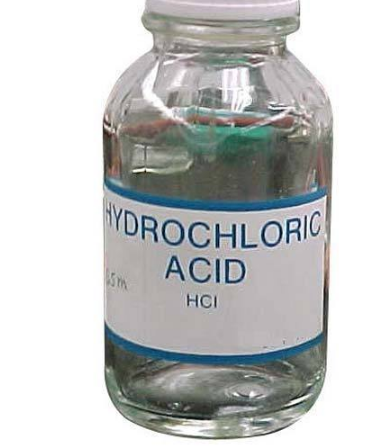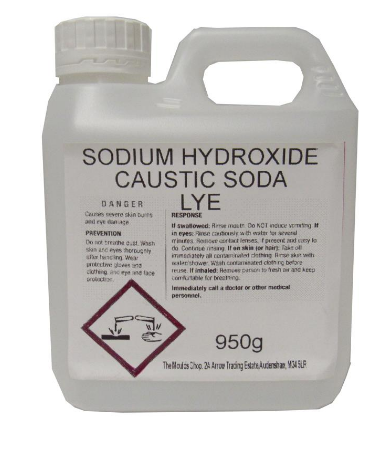Definition Of Base And Acid According To Different Theories
According to Lewis theory of acid-base reaction, a base is any substance that can donate a pair of nonbonding electrons to form a new bond. Lewis theory also defines an acid as any substance that can accept a pair of nonbonding electrons to form a new bond. The general form of a Lewis acid-base reaction is:
A+ + Bˉ=>A-B
Where A+is an electron acceptor or Lewis acid whereas Bˉ is an electron donor or Lewis base, and A-B is a coordinate covalent compound. According to Lewis theory, an acid can also be referred to as an electrophile or Lewis acid whereas a base can be also be referred to as nucleophile or Lewis base.
According to Arrhenius 1887 theory, acids are substances that readily dissociate in water to yield electrically charged atoms or molecules referred to as ions one of which is hydrogen ions (H+). Arrhenius also developed a corresponding definition of bases as substances that readily ionize in water to yield hydroxide ions (OH–).
Arrhenius descriptions of acids and bases is narrow in the sense that it covers many of the most common acids and bases and their chemical reactions, but there are other materials that have the characteristics of acids but do not fall in this Arrhenius definition.
According to Brønstead Lowry theory of Acids and Bases, an acid and base react with each other, causing the acid to form its conjugate acid and base to form its conjugate base by exchanging a proton. Regardless of the solvent, a Bronstead-Lowry acid-base reaction occurs whenever a proton is transferred from one reactant to the other.
According to the theory, an acid is a chemical species capable of donating a proton or hydrogen cation whereas a base is a species capable of accepting a proton or hydrogen ion in aqueous solution. Bronstead-Lowry theory is a more inclusive definition capable of describing acid-base behavior under a wide range of conditions.
What You Need To Know About Acids
Characteristics Of Acids

- An acid is any substance which donates a proton.
- Acids conduct electricity (i.e they are electrolytes).
- Acids have a PH value of Less than 7.0
- Depending on the temperature, acids can occur in solid, gaseous or liquid state.
- Acids have a sour taste.
- Acids react with metals to produce hydrogen gas.
- Acid’s chemical formula starts with H, for example Hydrochloric acid (HCL), Boric acid (H3BO3), sulphuric acid (H2SO4) and carbonic acid (CH2O3.
- Acids are corrosive in nature.
- Strength of acids depends on concentration of the hydronium ions.
- All acids turn blue litmus paper into red.
- When acid is dissolved in phenolphthalein, the resultant color of the solution is colorless.
Types Of Acids
Furthermore, acids and bases may be classified as weak or strong depending on the hydrogen ion or hydroxide ion concentration produced in solution. The strength of an acid refers to how readily an acid will lose or donate a proton in aqueous state. Polarity of the molecule and strength of covalent bond holding hydrogen ions in an atom are two important factors that influence the strength of an acid.
Strong Acid
A strong acid more readily ionizes or dissociates in a solution to yield Hydrogen ions. Six common strong acids are:
- Nitric acid (HNO3)
- Perchloric acid (HCLO4)
- Sulfuric acid (H2SO4)
- Hydroiodic acid (HI)
- Hydrobromic acid (Hbr)
- Hydrochloric acid (HCl).
Weak Acids
A weak acid is one that does not dissociate fully into its ions in an aqueous solution or water. For example hydrofluoric acid dissociates into hydrogen ions (H+) and Fluoride ions (F-) in water, but some HF remains in solution, therefore, it’s not a strong acid. It is also important to note that, most organic acids are weak acids. Examples of weak acids include:
- Oxalic acid (HO2C2O2H)
- Sulfurous acid (H2SO3)
- Hyrogen sulfate ion (HSO4–)
- Phosphoric acid (H3PO4)
- Nitrous Acid (HNO2)
- Hydrofluoric acid (HF)
- Methanoic acid (HCO2H)
- Benzoic acid (C6H5COOH)
- Acetic acid (CH3COOH)
- Formic acid (HCOOH)
N/B: You need not to confuse the terms strong and weak with concentrated and dilute acids. A concentrated acid is one with low amounts of solvent (water) whereas a dilute acid is one that contains a lot of solvent (water).
What You Need To Know About Bases
Characteristics Of Bases

- A base is any substance which accepts a proton.
- A base has a chemical formula OH at the end of it. For example, sodium hydroxide (NaOH) and Potassium Hydroxide (KOH) etc.
- Bases make phenolphthalein solution turn pink when dissolved in it.
- Strength of base depends on concentration of the hydroxide ions.
- Bases are soapy in nature.
- Bases do not react with metals.
- All bases turn red litmus paper into blue.
- When bases dissolve in water, they release hydroxide ions (OHˉ).
- The PH value of all bases is Greater than 7.0 and could go up to 14 in case of stronger bases.
- Bases feel slippery because of the reaction of the base with the oils on your palms.
Types Of Bases
A base can be classified into five classes, namely strong, weak, superbase, neutral base and solid base. Here are the details.
Strong Base
A strong base is a base that is fully dissociates in an aqueous solution. These compounds ionize in water to yield one or more hydroxide ion (HO-) per molecule of base. Strong bases react with strong acids to form stable compounds. Most alkali and alkaline earth metal hydroxides are strong bases in solution. Examples include:
- Sodium Hydroxide (NaoH)
- Potassium Hydroxide (KOH)
- Lithium hydroxide (LiOH)
- Rubidium hydroxide (RbOH)
- Cesium hydroxide (CsOH)
- Calcium Hydroxide (Ca(OH)2
- Barium hydroxide (Ba(OH)2
- Strontium Hydroxide (Sr(OH)2
Superbases
Group 1 (alkali metal) salts of amide, carbanions and hydroxides are referred to as superbases. These compounds cannot be kept in aqueous solutions because they are stronger bases than hydroxide ion. Superbases deprotonate water.
Neutral Base
A neutral base is one that forms a bond with a neutral acid.
Weak base
A weak base is one that partially dissociates in water and the resulting aqueous solution containing OH-ions and a small proportion of un-dissociated molecules of the base. A weak base may also be defined as a chemical base with incomplete protonation. Ammonia is a good example of a weak base.
Solid Base
A solid base is one that may be used in anion exchanged resins or for reactions with gaseous acids. It is active in solid form. Silicon Dioxide (SiO2) and NaOH mounted on alumina are the examples of a solid base.
Difference Between Acid And Base In Tabular Form
| BASIS OF COMPARISON | BASE | ACID |
| Bronstead-Lowry Description | A base is any substance which accepts a proton. | An acid is any substance which donates a proton. |
| Lewis Description | A base is a substance that donates the pair of the electron (a nucleophile) and will have a lone pair of electrons. He referred to this as Lewis base. | An Acid is a substance which accepts the pair of electrons (an electrophile) and will have a lone pair of electrons. He referred to this as Lewis acid. |
| Arrhenius Description | A base is an aqueous substance that donates electrons, accept protons or release hydroxyl ions (OHˉ). | An acid is a kind of chemical compound that when dissolved in water gives a solution more (H˖) ion activity than purified water. |
| PH Value (Measure of Concentration of hydrogen ions in a solution) | The PH value is usually greater than 7.0 and could go up to 14 in case of stronger bases. | PH value of Less than 7.0 |
| Physical State | Often, bases are exists in liquid and solid state at room temperature. It is only ammonia which exists in the form of gas and taste sour. Also bases feel slippery because of the reaction of the base with the oils on your palms. | Depending on the temperature, acids can occur in solid, gaseous or liquid state. Acids have a sour taste. |
| Chemical Formula | A base has a chemical formula OH at the end of it. For example, sodium hydroxide (NaOH) and Potassium Hydroxide (KOH) etc. | Acid’s chemical formula starts with H, for example Hydrochloric acid (HCL), Boric acid (H3BO3), sulphuric acid (H2SO4) and carbonic acid (CH2O3. Although there are exceptions such as CH2COOH, and many others. |
| Phenolphthalein | Bases make phenolphthalein solution turn pink when dissolved in it. | When acid is dissolved in phenolphthalein, the resultant color of the solution is colorless. |
| Litmus Paper Test | All bases turn red litmus paper into blue. | All acids turn blue litmus paper into red. |
| Dissociation | When bases dissolve in water, they release hydroxide ions (OHˉ). | When acids dissolve in water, they release hydrogen ions (H˖). |
| Strength | Strength depends on concentration of the hydroxide ions. | Strength depends on concentration of the hydronium ions. |
| Reactivity | Bases do not react with metals. | Acids react with metals to produce hydrogen gas. |
| Nature | Bases are soapy in nature. | Acids are corrosive in nature. |
| Use | Used in gastric medicine (antacids) Soaps & detergents Deodorants Neutralization of soil acidity Antiperspirants | Making sodas Adding flavor to food Household cleaning Leather processing Fertilizer manufacturing Preservatives |
| Examples | Ammonium hydroxide (NH4OH) Baking soda (sodium bicarbonate). Sodium hydroxide (NaOH) Lithium hydroxide (LiOH) Calcium Hydroxide Ca(OH)2 | Acetic acid Lactic acid Citric acid Sulphuric acid Salicylic acid Hydrochloric acid Muriatic acid Nitric acid Carbonic acid |
What Are Some of The Similarities Between Acids And Bases?
- Both acid and base are electrolytes this means they can conduct electric current when in aqueous state.
- Acids and bases, both react with indicators to produce different colors. Common indicators are phenolphthalein and litmus paper.
- Both acids and bases are soluble in water.
- They both form salts with each other. Usually a reaction between an acid and a base will produce a salt.
- Both acids and bases are chemical compounds. They are made up of one or more elements or atoms.